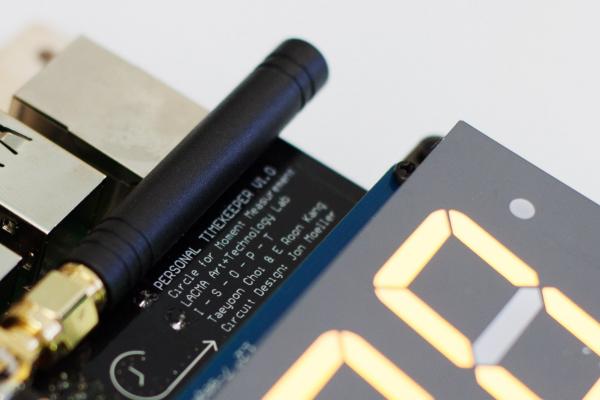Recently, Taeyoon Choi and E Roon Kang presented the culmination of their year-long artist project, funded through our Art + Technology program, over the course of a weekend at LACMA. The project, called In Search of Personalized Time, has been an ongoing investigation of what the artists call “time based on perception and consensus.”
Of course, their interest in time and methods of time measurement and management has a history in art. On view through September 7 is Christian Marclay’s The Clock, a twenty-four hour montage of images taken from film and television scenes depicting the passage of time through all manner of time-keeping devices. And our collection includes myriad timekeeping devices, some true masterpieces that express the height of design standards in the culture in which they were made. We even have a whole component of our collection of nearly 130,000 works of art that we call “time-based media”—a term for works of art (often film, video, audio or computer-based art) where duration and the passage of time (and, often, technology and the evolution of operating systems) are an important element.
But Taeyoon and Roon’s project took an original perspective on time, asking how we might find ways of rebelling against the global networked 24-hour clock, creating more personal, peculiar ways of measuring our days and sharing alternative “consensus time” with the people close to us. The artists call it “an attempt to live in unreal time in a real-time world.”
You can read a full chronicle of the project here. Over the course of a year, Taeyoon and Roon held workshops at LACMA, and in New York, Boston, and Seoul, with small groups of people where they explored time as a malleable material, and heard from the public about what “personalized time” might mean to them. These were prototyping workshops in which the participants used handmade materials—balsawood boxes, LEDs, crude motors and paper circuits—to make a personal timekeeper that expressed their thoughts and preferences. The videos from these workshops are funny, poignant, and thought-provoking.
Following the prototyping workshops, the artists went away and spent several months in their studio in Brooklyn collaborating with developer Jon Moeller to create a set of “Personal Timekeepers”: electronic devices with seven segment displays, an input button on the outside, and an antenna and a Raspberry PI microcomputer, a GSM module and a rechargeable battery on the inside (they open-sourced the code here).
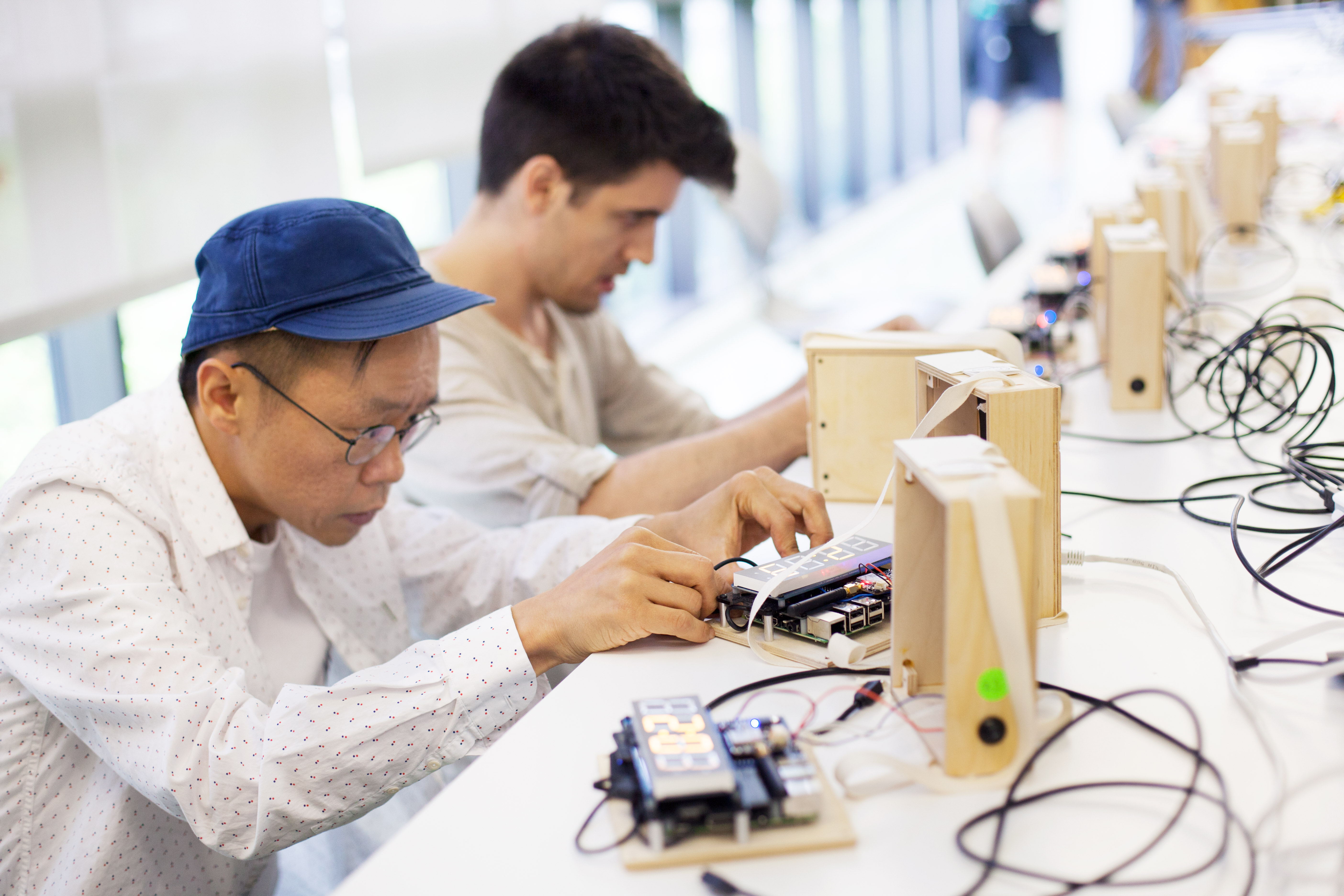
The devices looked a bit like the old-style audio tour devices that museums used to hand out, but they functioned quite differently, serving as the prompt and pretense for a performance-based event that involved not only the willing participants who signed up, but also other visitors to the museum, who were naturally curious about these cute wooden boxes with a blinking LED clock display and the somewhat odd behavior of the people carrying them.
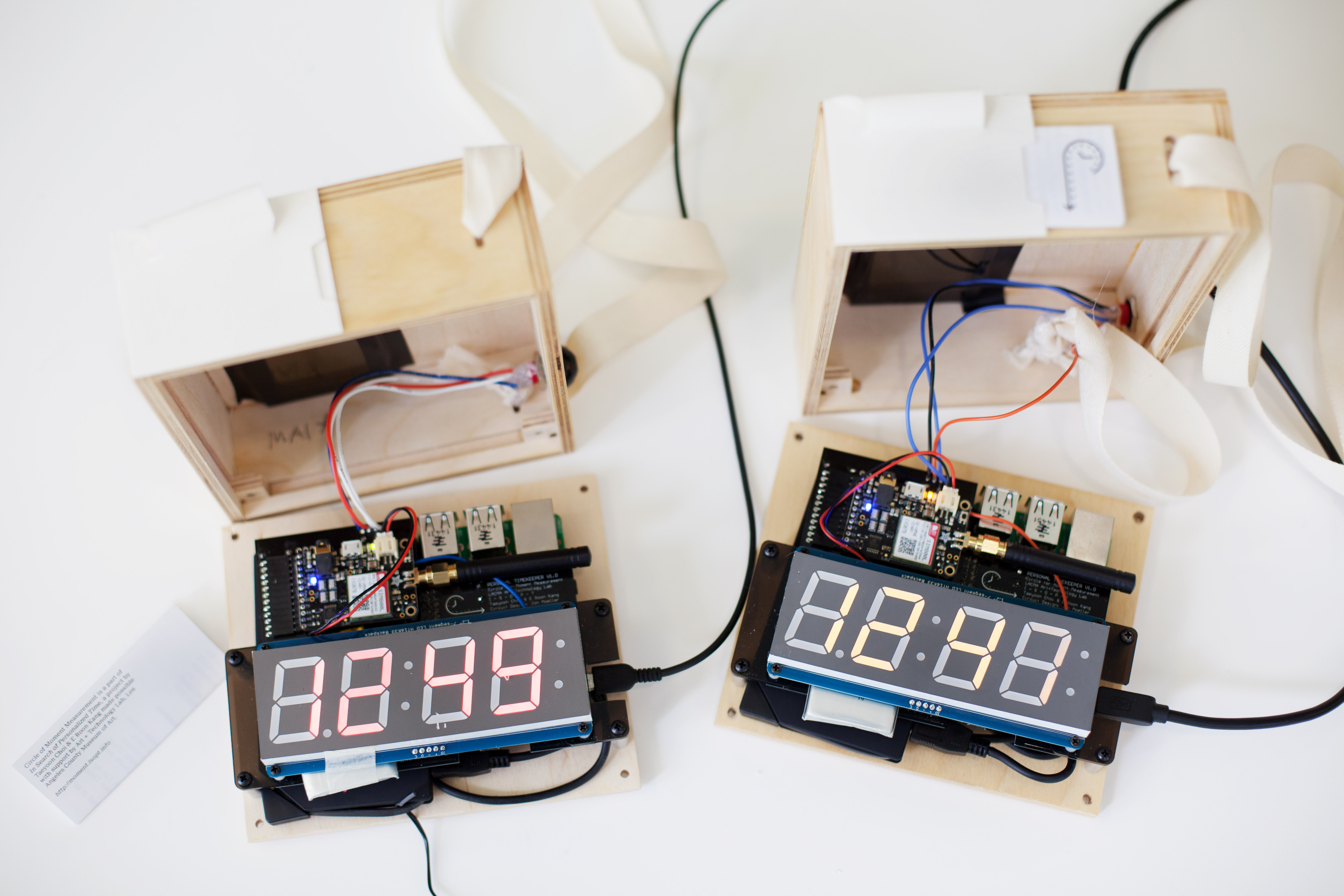
The event started with the artists introducing the project concept. E Roon said about time, "Our perception of time varies. The time when you are sitting on the beach and the time when you are sitting in a boring lecture feels different. However, standardized time advances at a constant pace. Everything in the world, from commerce to everyday life, is based on the synchronization of time."
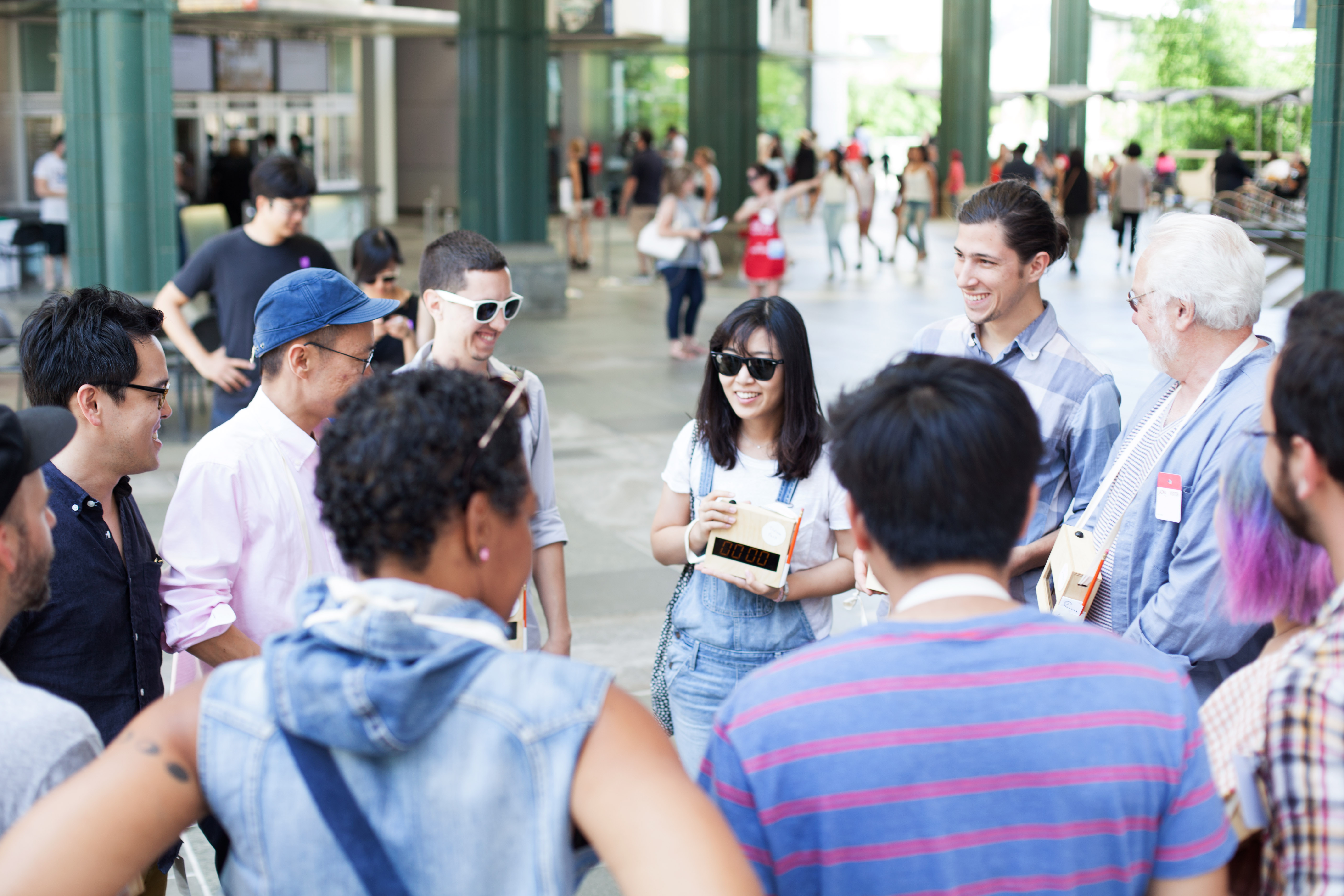
Taeyoon continued: "We know time is precious because we only have so much of it. The finitude of time may be the only thing we all have in common. We are reminded of the limit to our existence, and in rituals and ceremonies like birthdays and funerals, time brings us together to create community."
The artists had assigned each participant a short list of suggested activities to help them create and measure “moments” of significance using only their intuition.
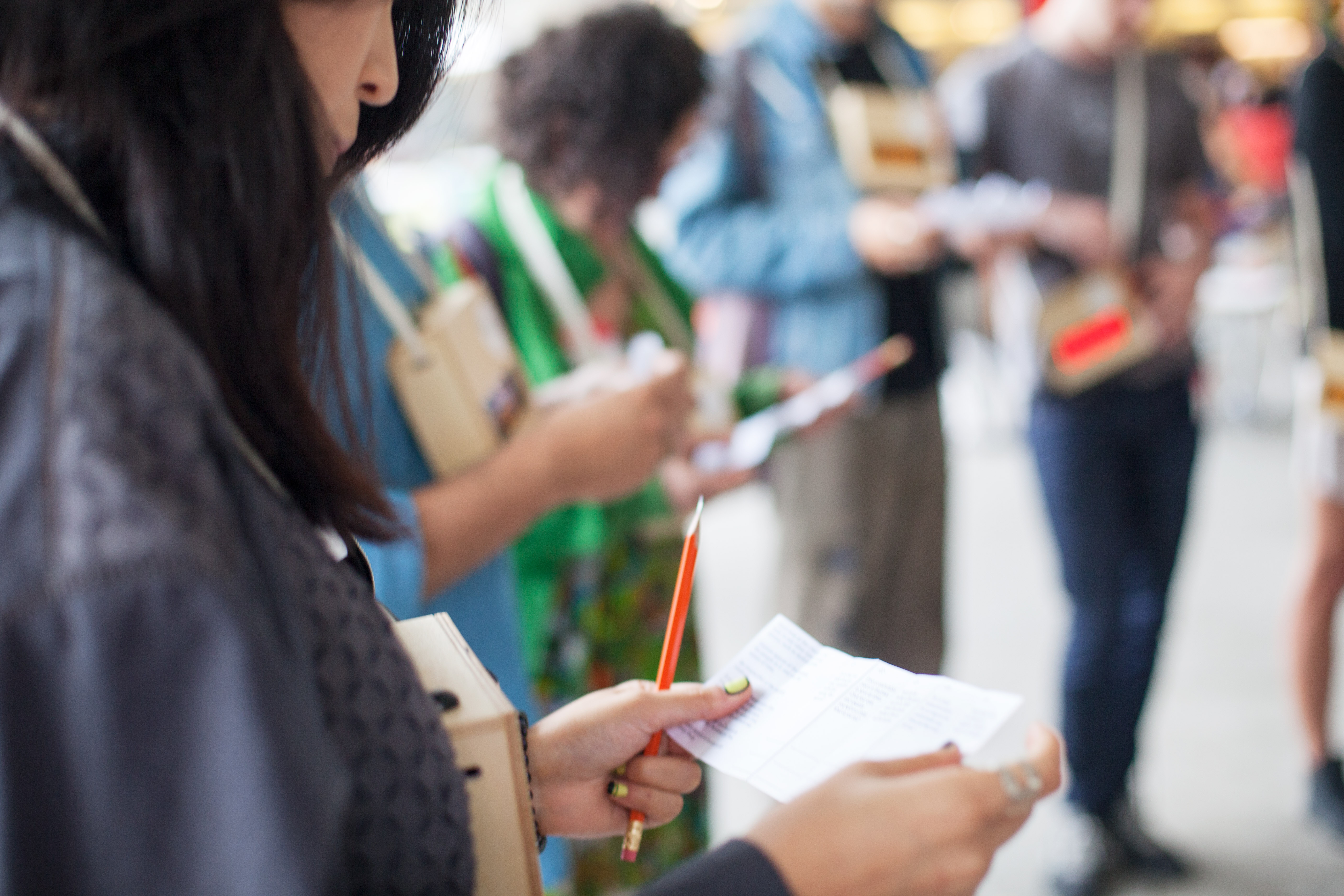
As each participant measured their own personally significant moments, the clock display on their device began to adjust, the minutes passing more slowly or more quickly depending on the user’s inputs. (The artists likened the effect to the date paintings of On Kawara.) The device is connected to an online server and website that visualizes the participants' interaction with time.
Each participant was instructed to return to the Art and Technology Lab when their personal timekeeper displayed the time 3:30 pm; of course, as each timekeeper adjusted to its user, “3:30” came to mean different things for different users.
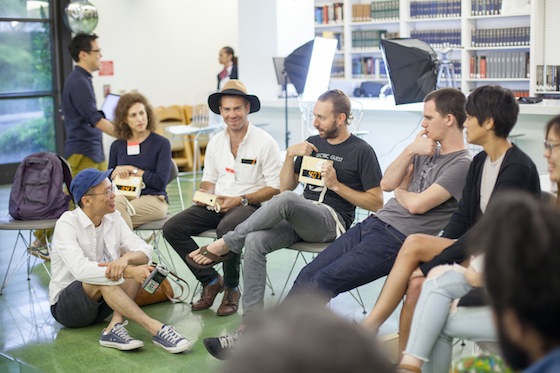
The participants gradually rolled in over the course of about an hour, and as they did, they recorded a short video reflecting on their awareness of personalized time. As with the original prototyping workshop videos, the results were poetic, poignant, and funny.
The project lives on as Taeyoon and Roon continue their investigation and documentation. Their blog is a great chronicle of the ongoing work they are doing. Meanwhile, at LACMA, we look forward to showing their timekeeping device on display in the Lab this fall and winter. It takes its place as the most recent of a long history of artist experiments with time and timekeeping.
The Art + Technology Lab is presented by:

The program is made possible by Accenture, DAQRI, and NVIDIA, with additional support from Gensler, Google, and SpaceX.
The Lab is part of The Hyundai Project: Art + Technology at LACMA, a joint initiative exploring the convergence of art and technology.



